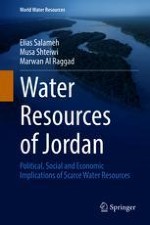This book gives a detailed account of the scarce water resources of Jordan, with a focus on their quantities, quality, and use for different sectors. It details the political, social, and economic dimensions of the scarce water resources along with their implications on Jordan's cooperation with its neighbors. The book includes implemented projects of dams, canals, water supply networks, waste water treatment, and more. It gives an overview of which projects have been successful and which have failed to achieve their purposes and why. Shared water with other countries and their developmental implications to the water sector are discussed and future water supply projects, such as the Red Sea-Dead Sea conduit project, are elaborated on. The book also touches upon the waves of refugees and their impact on the water sector and water strategies in Jordan.
